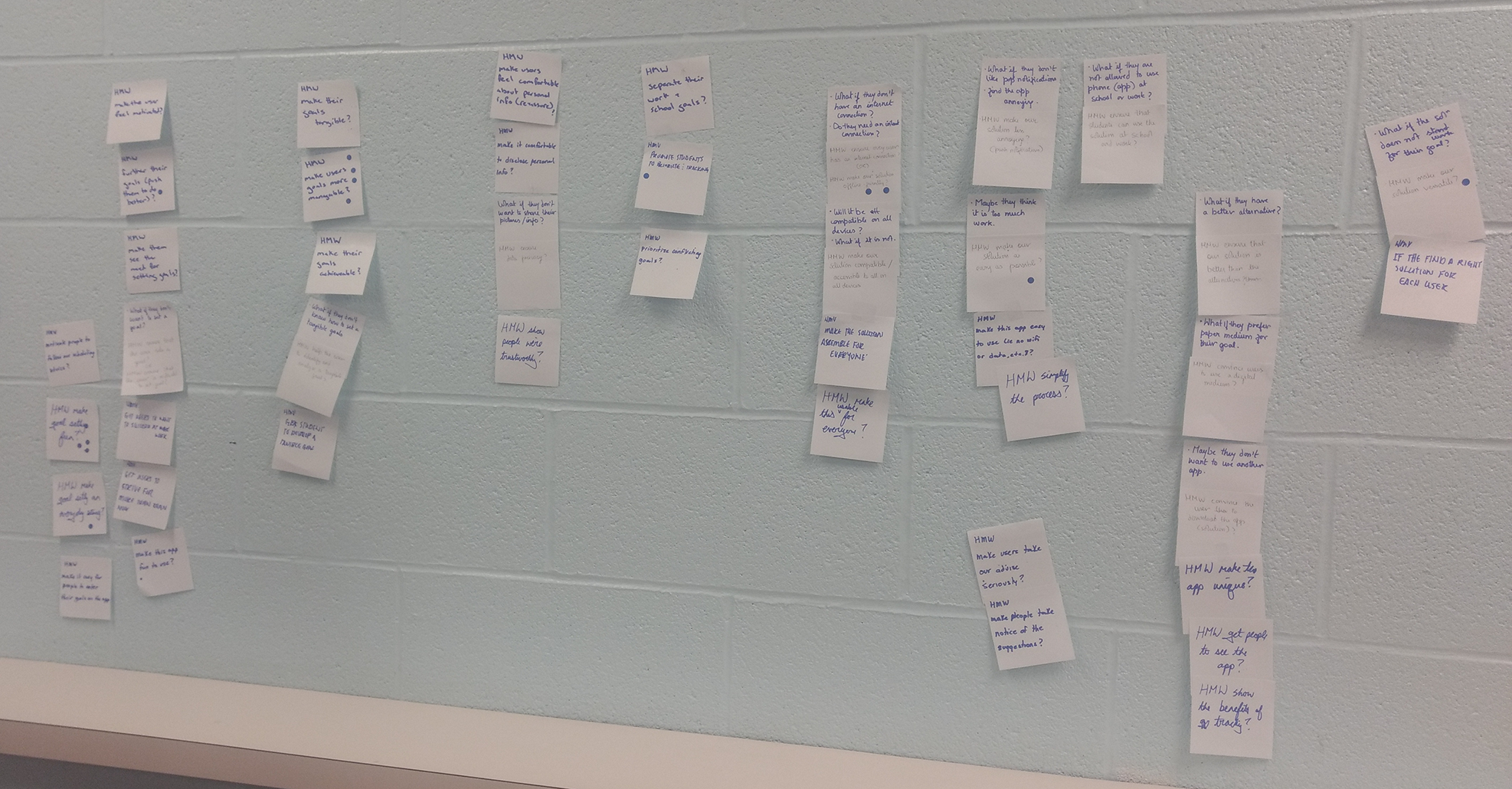
ROLE:
Self, school project
TIME:
One week
APPLICATION:
Mobile App(Android)
TOOLS:
Adobe Suite, Figma, Adobe XD
SECTOR:
Health and Fitness
CHALLENGE:
Using a Lean UX approach to design and create a better user experience
CLIENT:
Top Class
MY ROLE:
Research, user interviews, analysis, collaboration, design, creation of prototypes
OVERALL OBJECTIVE:
Understanding users’ frustrations and creating an engaging platform for a better customer experience
This project involved interviewing users to understand their main frustration of setting goals, using the Lean UX approach. We were able to find the users’ major pain points and then quickly pivot to find a solution. Our team of five people conducted a one-day design sprint to brainstorm for ideas about how we could provide a better user experience. A prototype design was created from this one-day design sprint and ideation process.
Based user interviews, I concluded with a statement that explained the major painpoints based on their characteristics. We used the problem statement that were developed from the insights of user interviews.
In order to collect the required information I created a discussion guide and conducted three interviews, all sessions lasted 30 minutes. In addition, I created empathy maps for all interviews explaining the insights from the interview. The subjects all had a commonality of doing fitness and excerise.
The questions provided a documented record of how each user set their fitness goals. It was a challenge to find users who shared similar goals. I found participants at the gym, where more of my subjects were able to answer fitness related questions.
OUTCOME:
Users who want to lose weight will need to see improvements which gives them more ambition to create more goals.
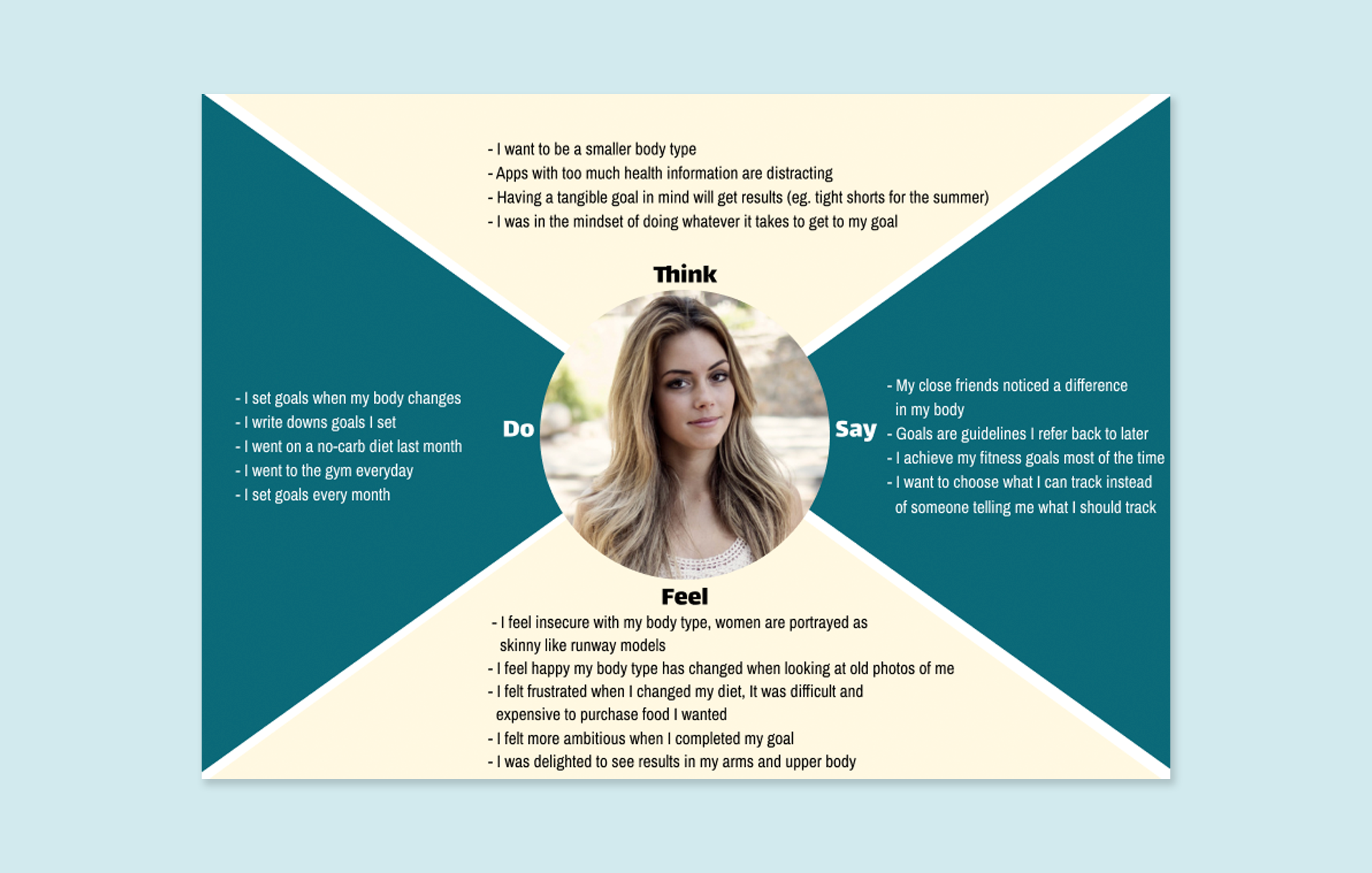
Drawing on the user interviews, I created user empathy maps, explaining each user’s frustration with setting fitness goals. I concluded each of my reports with a statement that described the users’ major pain points related to their characteristics. The team used the problem statements that were based on insights derived from the user interviews.
OUTCOME:
Users who want to lose weight need to see improvements regularly, and this seems to give them increased motivation to create more goals.
Before we took part in the design sprint, our team got together to decide which users the design really seemed to be created for. At this point, the team members all had different data on their subjects from the interviews. For example, I used fitness setting goal data, while another member used diet setting goal data or school task setting goal data.
All of these data points made it challenging for us to create unique user personas that would match the design sprint. In order to overcome this challenge, we decided to examine the users we’d interviewed and choose the top three who’d be most likely to interact with goal setting regardless of what type of goal they’d set for themselves. We were able to document the conclusions of these 3 users.
We created three personas to reflect the fact that there are different types of users with different lifestyles. But ultimately, all three user personas expressed the same need to label their goal setting trends. Each of the three user personas, however, adopted a different perspective on how people would interact with the design.

We began our design sprint by using the interviewee data and the secondary research to map out a brainstorming session. All three users’ personas were used to create the framework of where to begin the design sprint. The design sprint consisted of 6 group members. As a result of the user interviews, we modified the problem statement so that it would best represent our user personas.
During our meeting, we collaborated on crafting a statement that would accurately describe the users we were helping. I was in charge of elaborating the initial problem from my research and refining that statement so that it reflected the students’ role instead of just fitness goals.
Because they have problems in visualizing their progress, students who work out need a way to track and prioritize tangible goals.
The design sprint was done over the course of a day. The sprint was a stressful experience, yet it showed how we were able to work together in order to reach one common goal. Through my participation in the sprint, I gained an insight into how people behaved while engaged in a stressful creative activity. The clash of personalities is different; some people are more vocal than others. Our team realised it would be beneficial to allow each person in the group to speak freely in order to make sure that every point of view was heard.
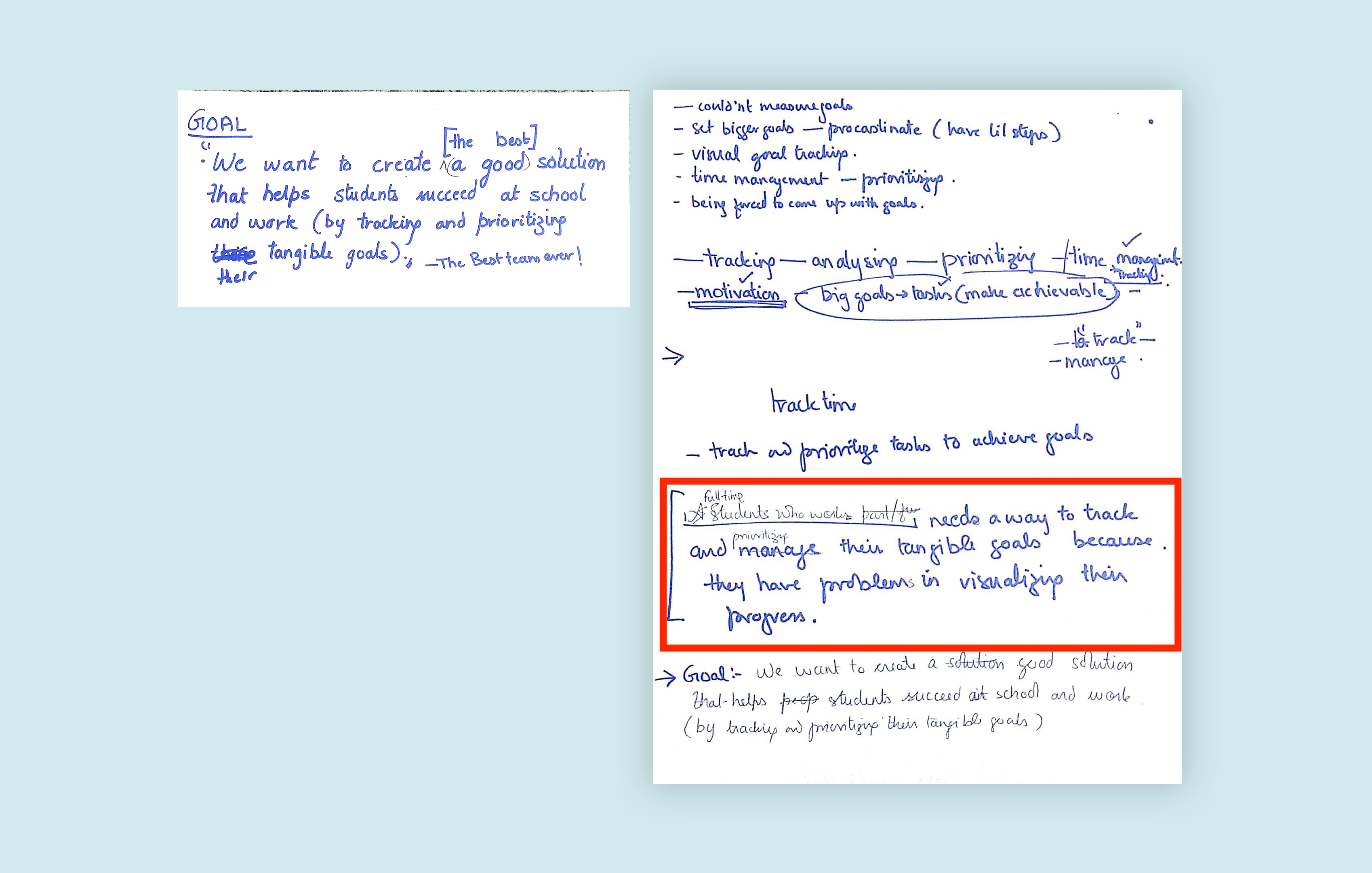
OUTCOME:
Students who works needs a way to track and prioritize tangible goals because they have problems in visualizing their progress.
We started the day brainstorming ideas on how we would solve our initial problem statement, using words to articulate it. We were all able to express our ideas on a sheet of paper. The session allowed us to think of ways to create our design without using drawings.
To begin the brainstorming session we reviewed the user interviews and personas to make sure that are making the right decisions. We composed sketches of how to improve the design and trying to "think outside the box" of how we can solve the problem.
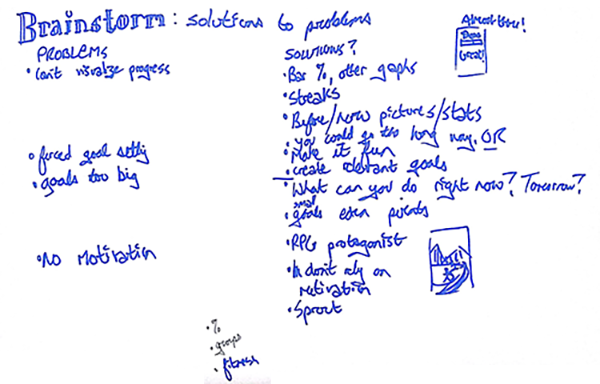
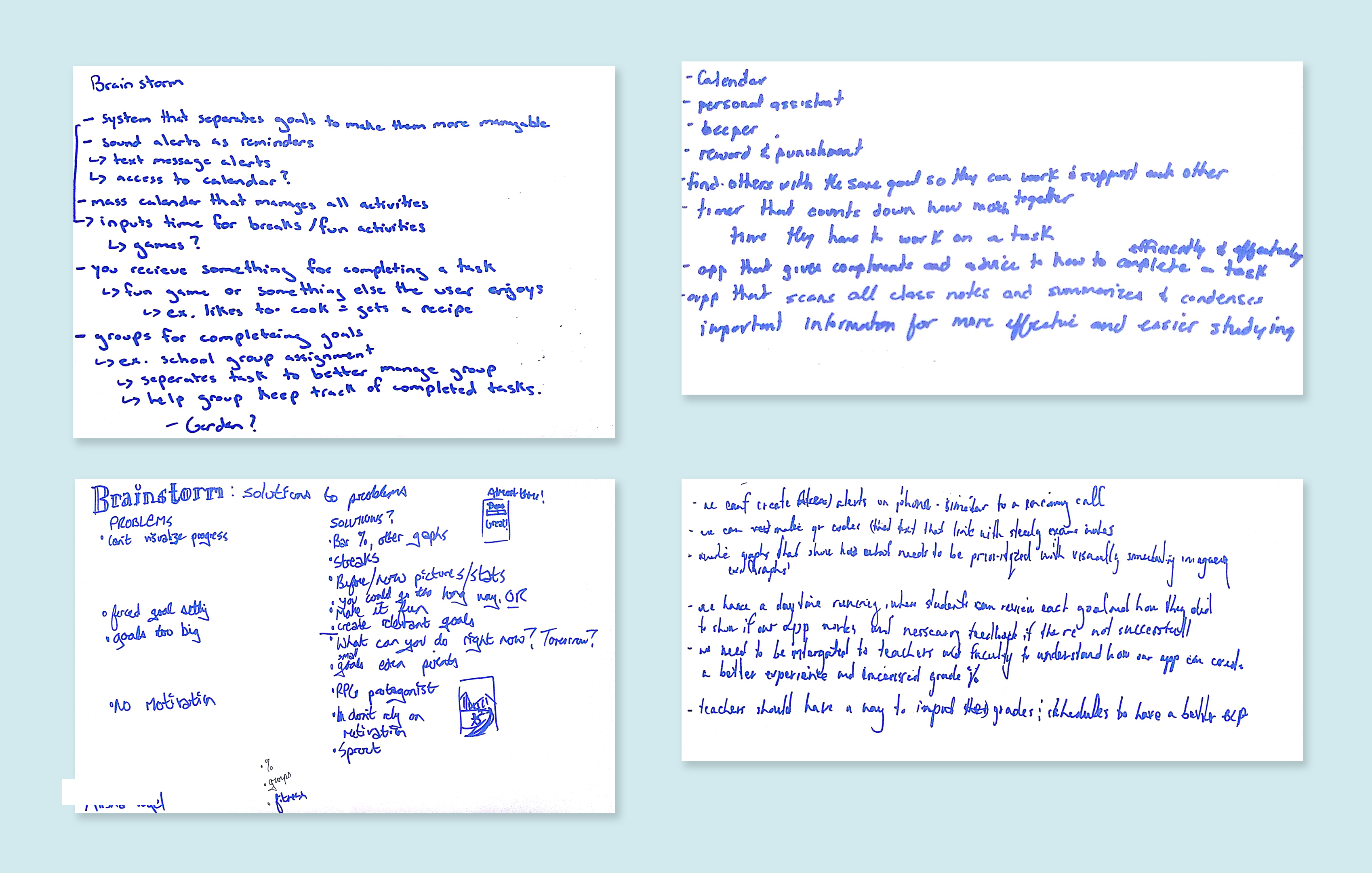
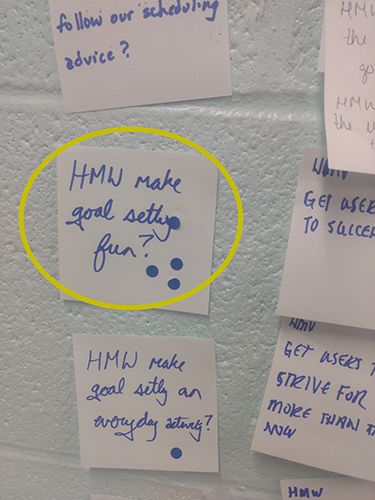
As we thought outside of the box about what we needed to do to solve the problem, I began to feel that the main reason for the exercise’s difficulty was that it was hard for each team member to see the other team members’ respective visions from each of one’s unique perspectives.
After our brainstorming session, we pinpointed specific areas of interaction that the user might go through. Our goal was to ideate improvements for those areas. We then voted for the best "How Might We Question" and that was to be our area of improvement.
OUTCOME:
"How might we make goal setting fun"
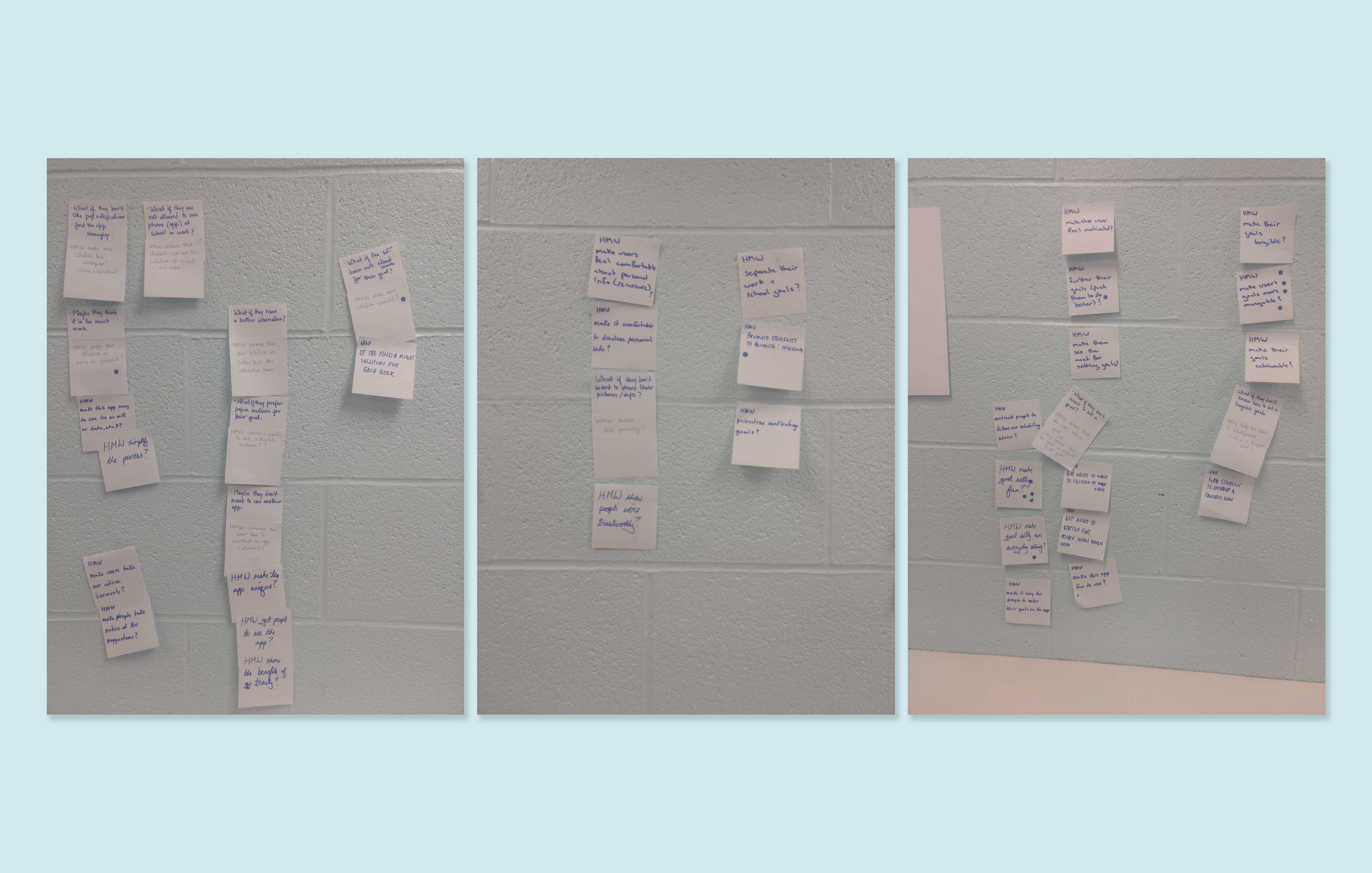
We spent six minutes of drawing followed by discussion and reiteration. Agile methods were key in our process of developing and testing the idea with the user. Below is the flow of design iterations from paper sketch.
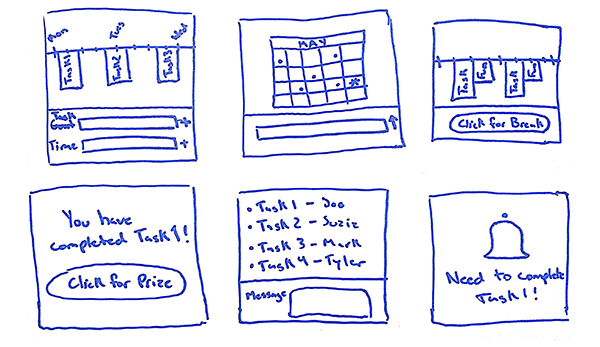
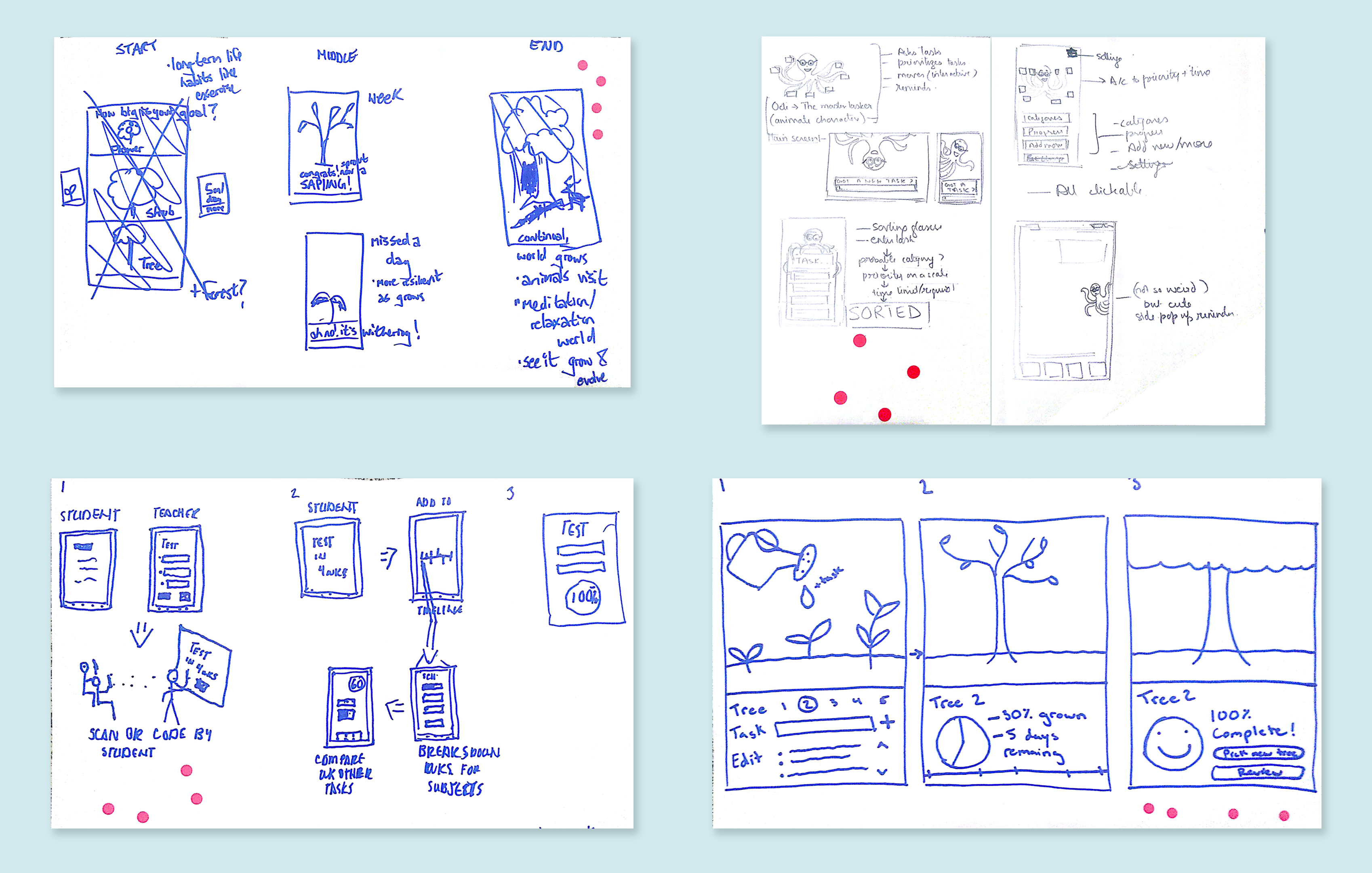
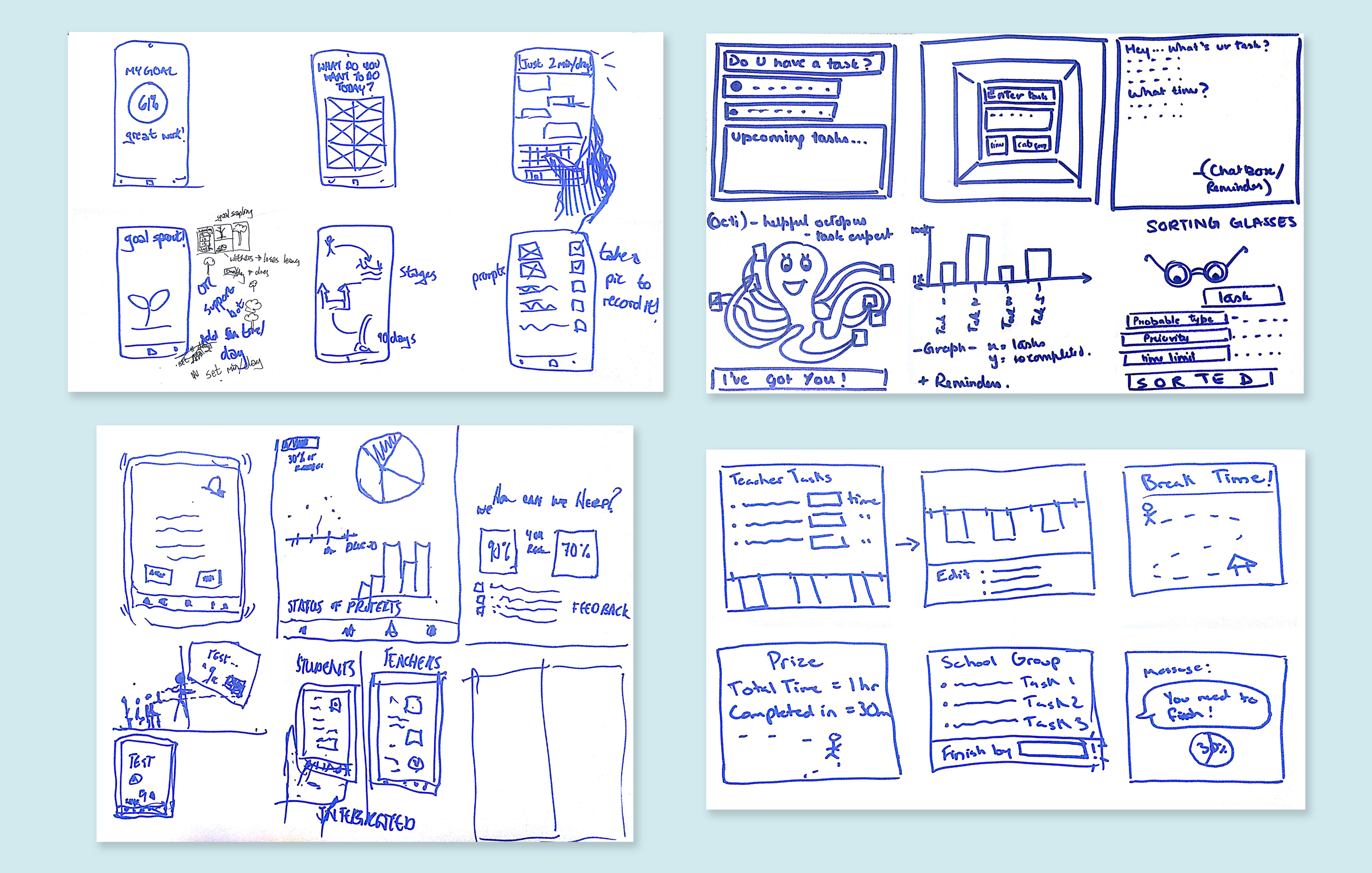
Based on the research and experience from the design sprint, I decided to focus on six primary screens to explain the user journey. The wireframes expanded when creating the medium fidelity after finding out the screens required a more extensive userflow.
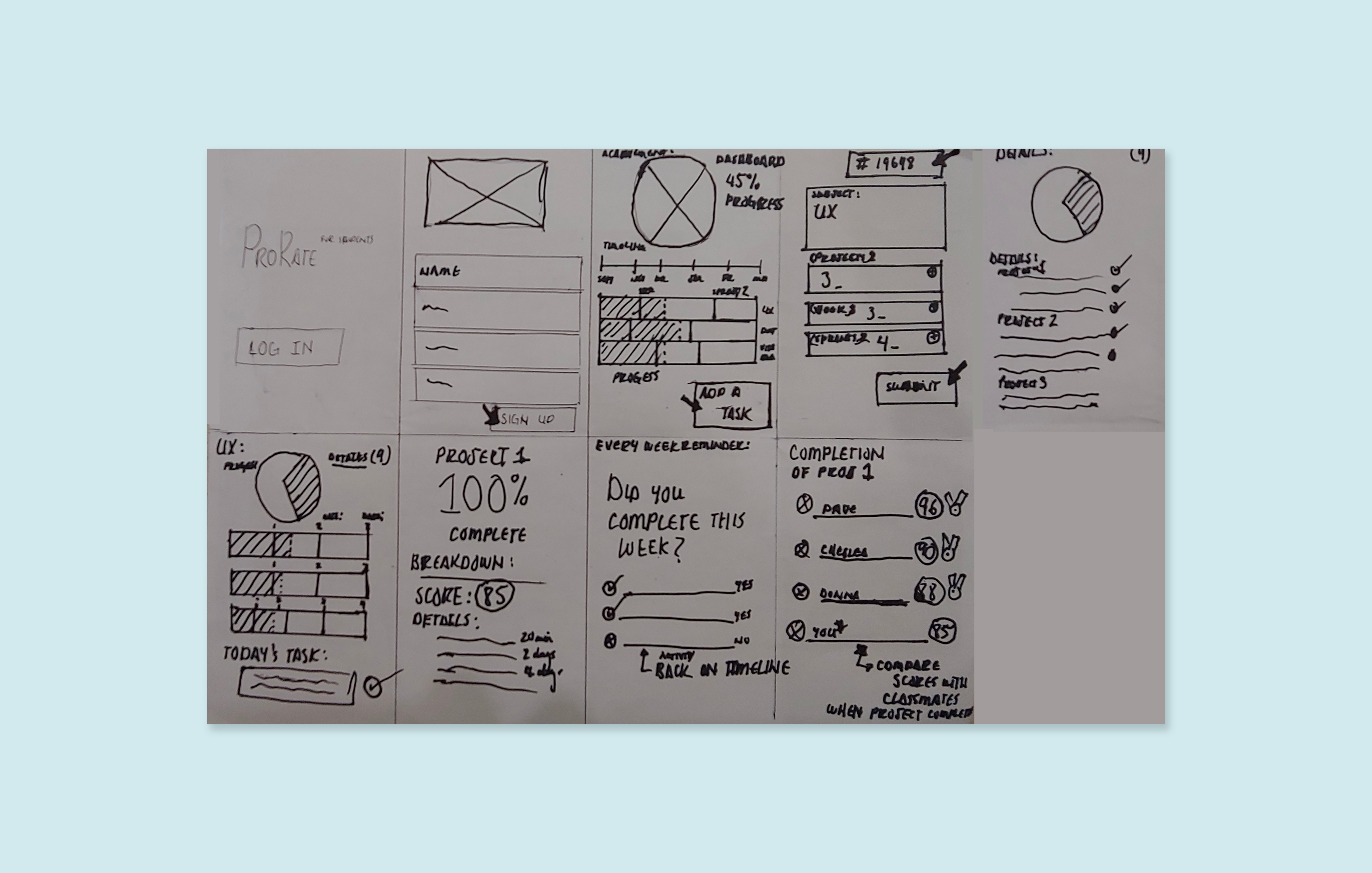
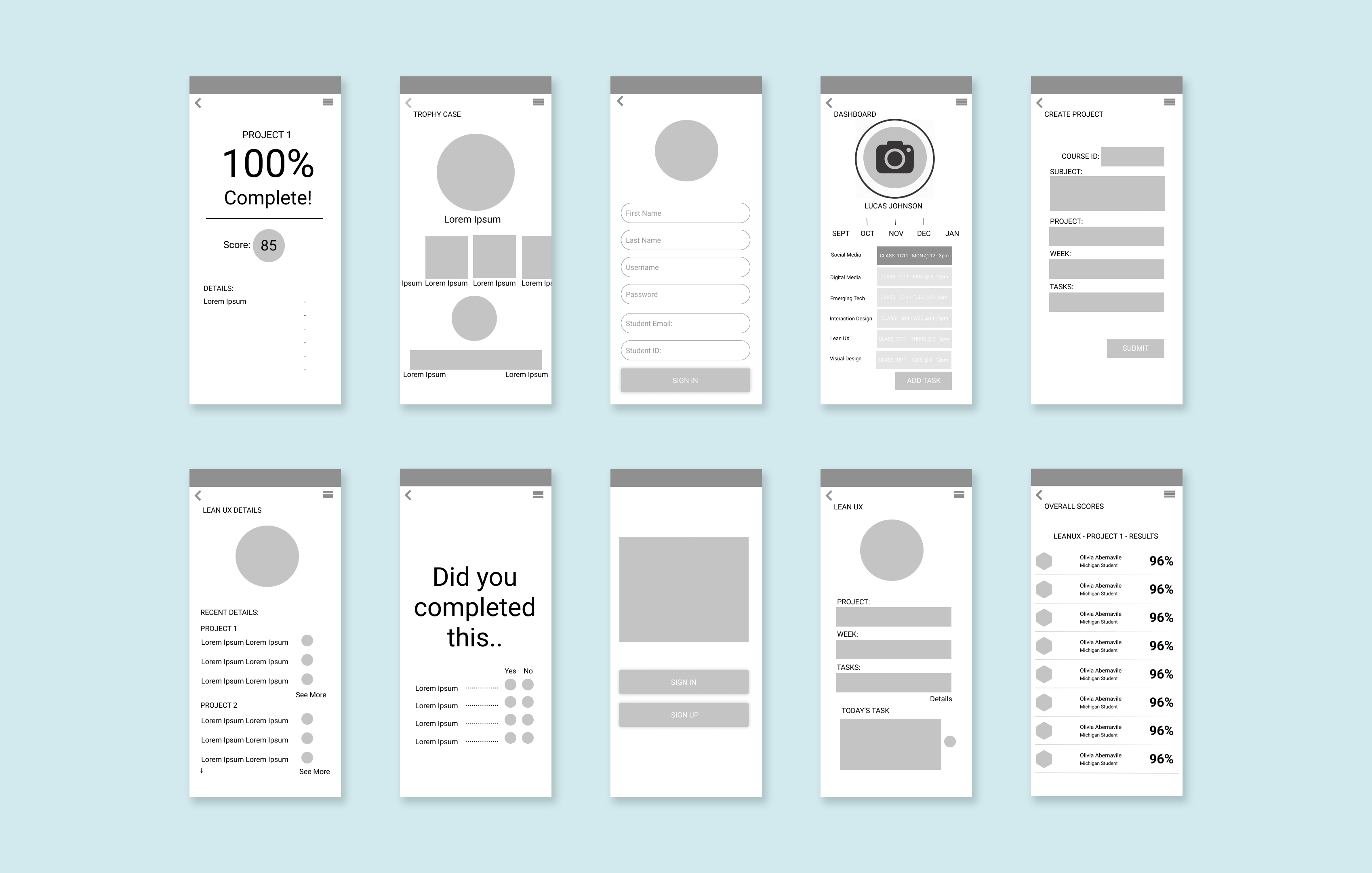
Using the data from the survey and usability testing, I redesigned the current user interface. Once new design mockups were reviewed, I created prototypes using InVision to allow select users to interact with the new experience and new UI.
REFLECTION:
Working on this project, I learned working with other peers through a design sprint can be a collabrative and enjoyable process. I learnt the design is an iterative process especially working with many people. It is important that ideas can change from the very first idea in order to deliver a better experience.
NEXT STEPS:
For now, the next steps would be to create an interactive prototype and carry out a first round of user testing for feedback. The current design needs to be updated with alignment, spacing and have a clearer content hierarchy.

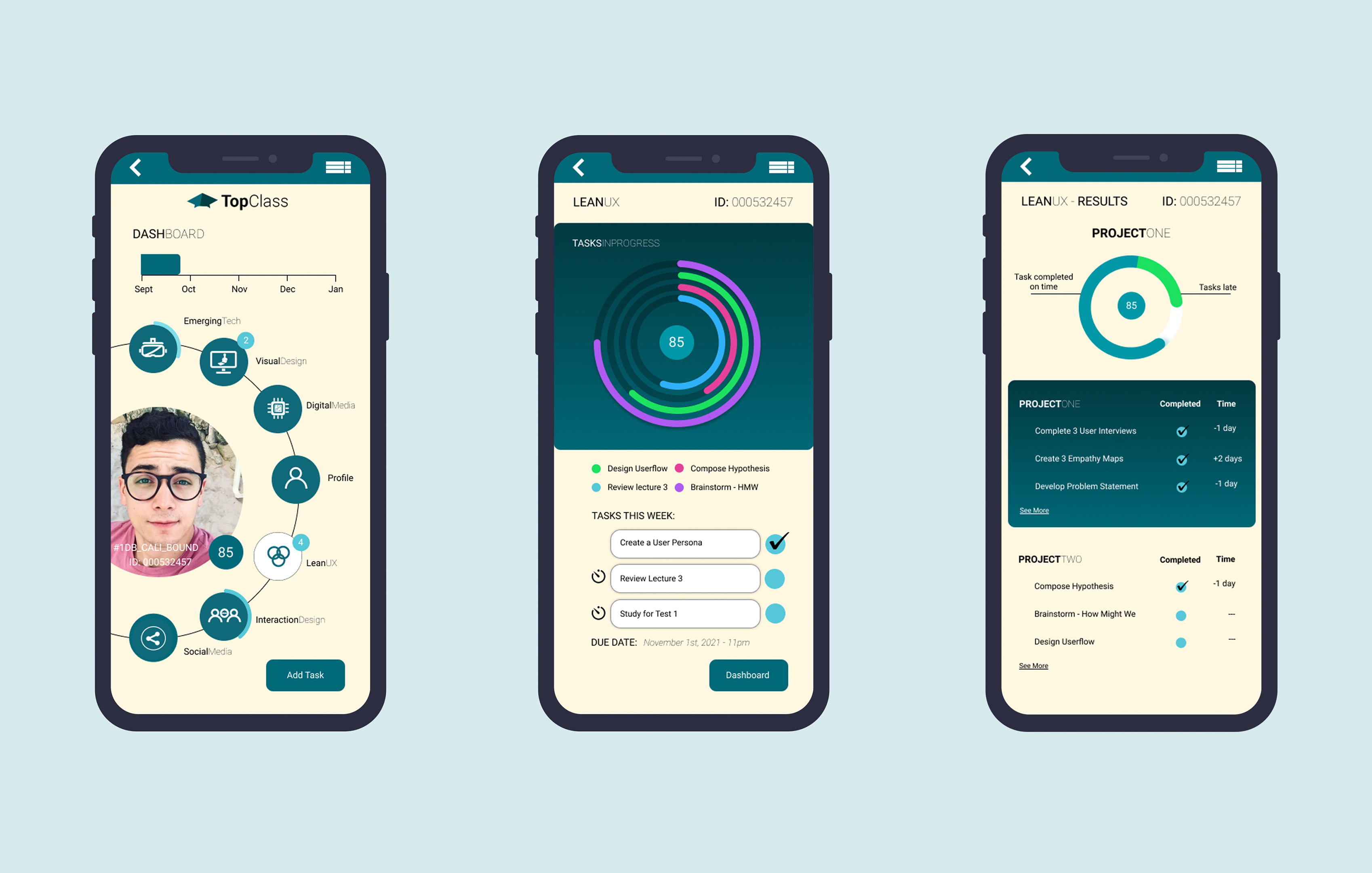
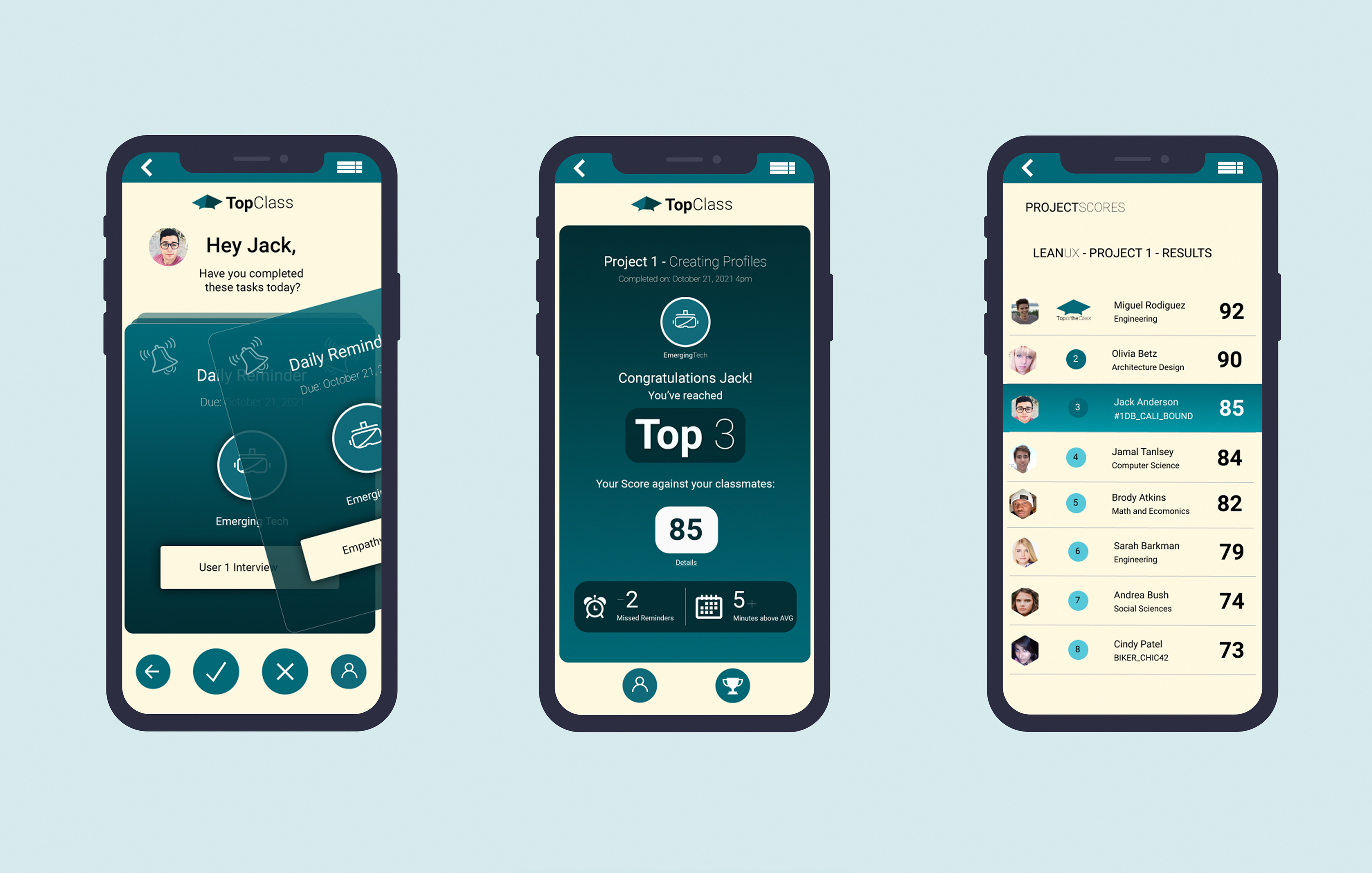
Previous Project
‹Bio
›